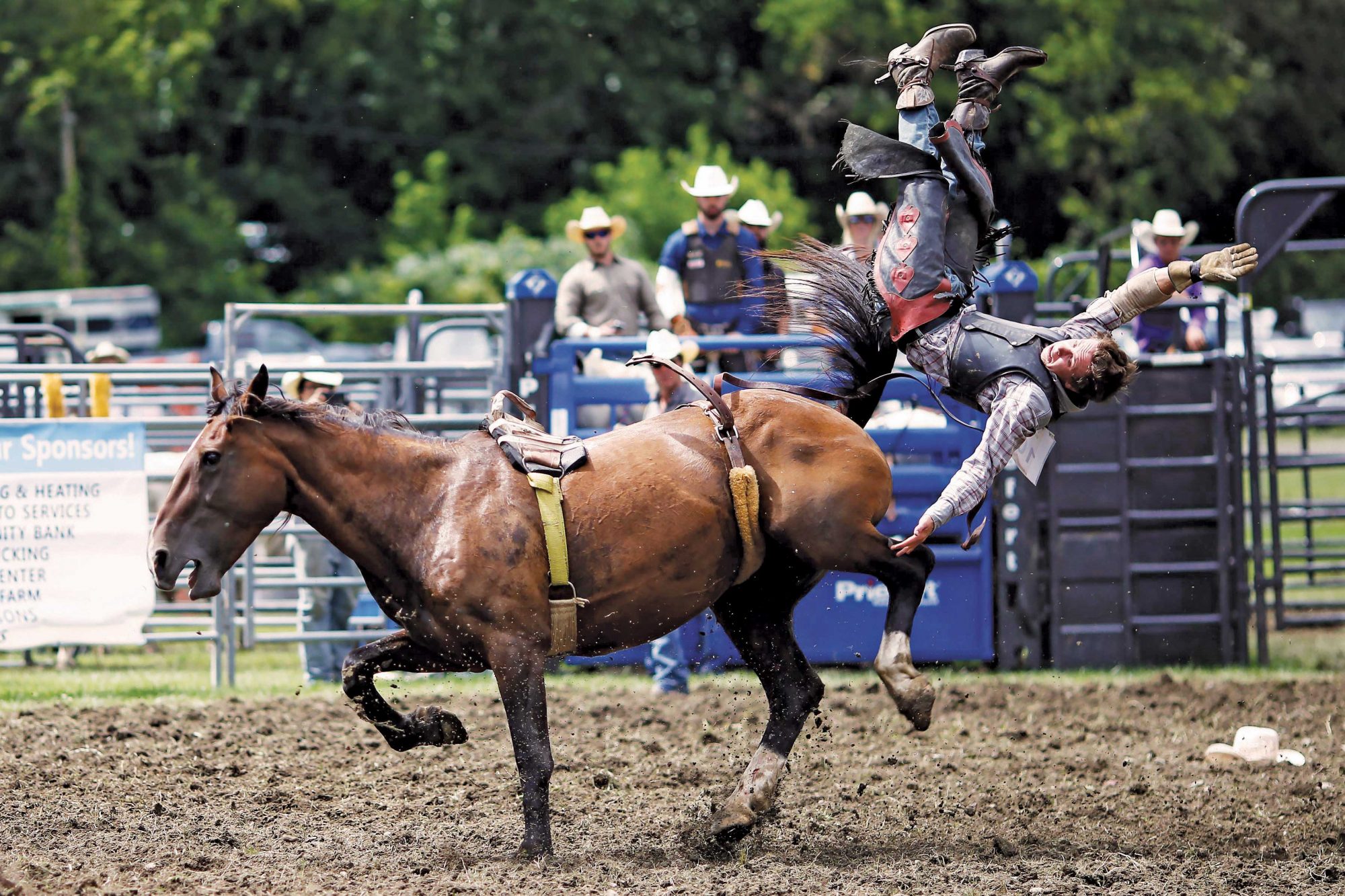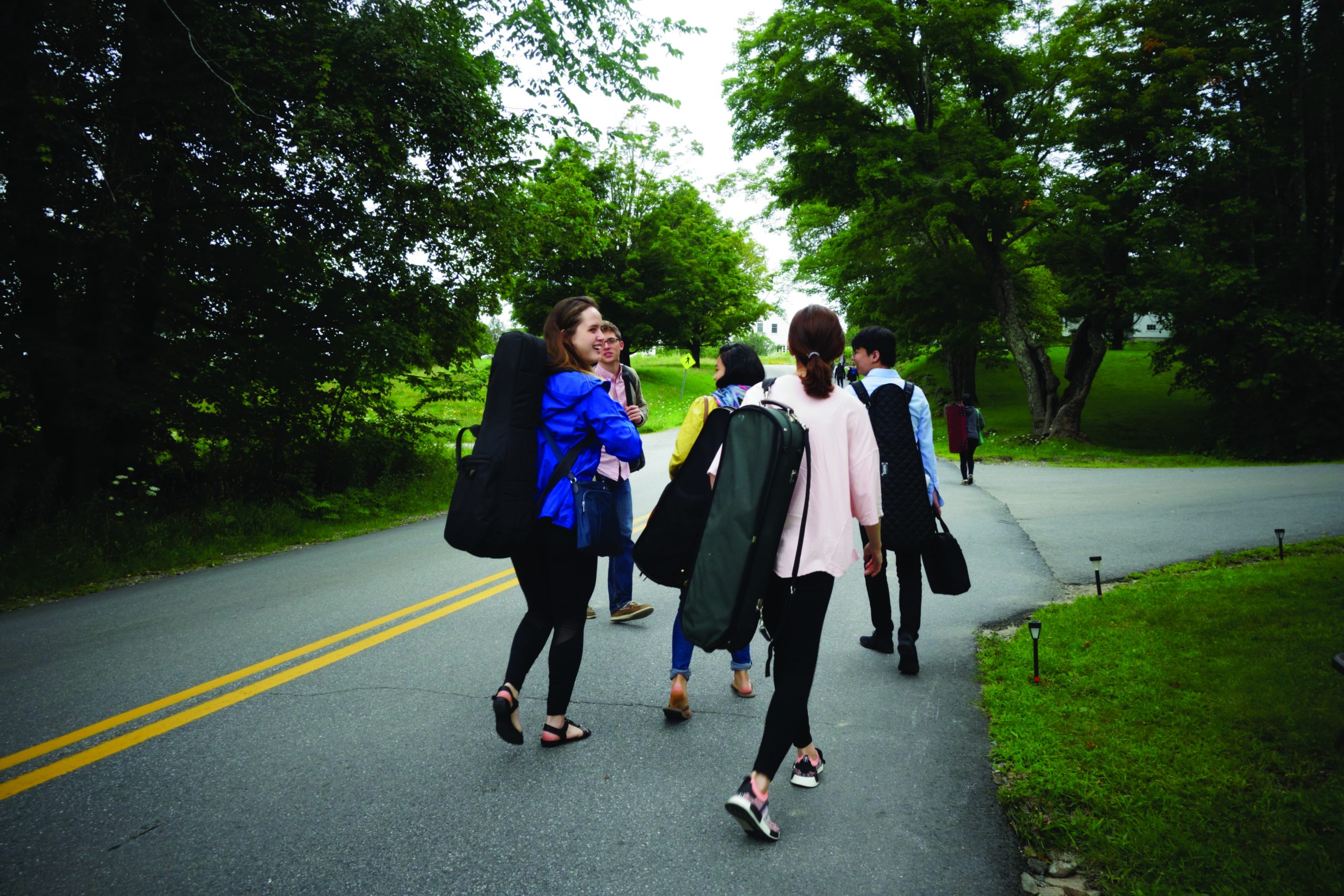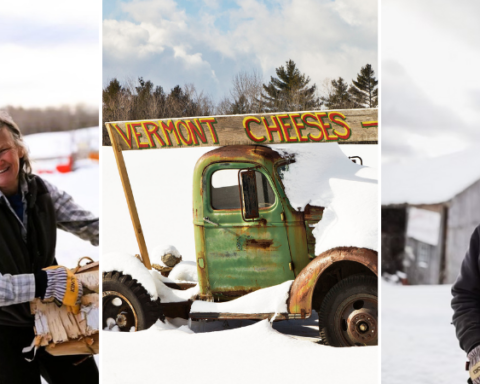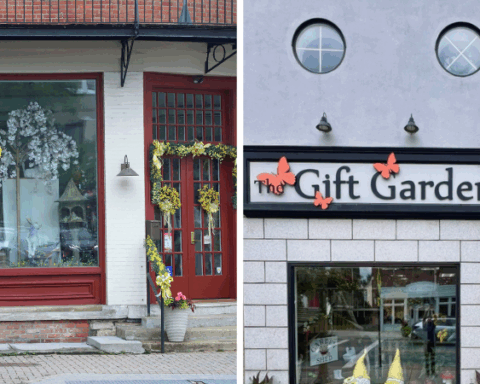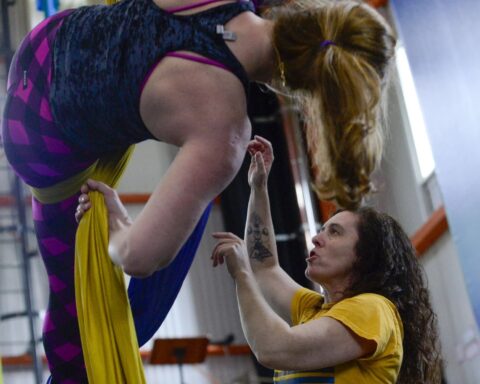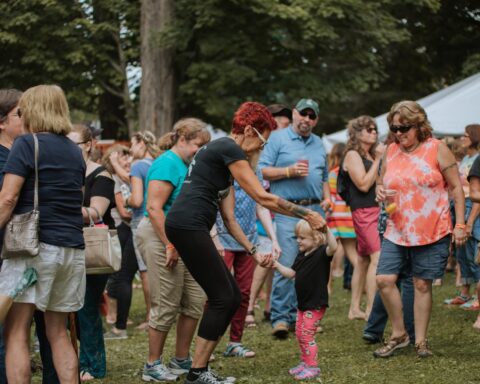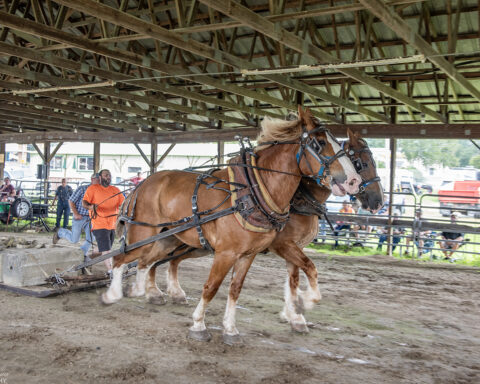
Agricultural fairs survive financial challenges, decline in volunteers and attendance
By Jennifer Huberdeau
On a cool June evening, the grounds of the Adams Agricultural Fair in Adams, Mass., are empty and quiet. Its grasses wave in the breeze.
In just two months’ time, the smell of popcorn, fried dough and cotton candy will waft through the air. Bowe Field, the proper name of the fairgrounds, will be bustling with activity: horse and oxen pulls, cattle and sheep judging, live music, a rodeo and a demolition derby.
As American as apple pie, the agricultural fair is the harbinger of the harvest season’s arrival. The modern day fair is now synonymous with fall’s impending arrival, livestock competitions, contests to see who can grow the largest vegetables and carnival rides.
But on this evening, the cattle and poultry barns at the Adams fairgrounds are empty. The only activity is in the exhibit hall, where a small group of volunteers has gathered. The task at hand is an all-you-can-eat breakfast buffet — a fundraiser to help pay the fees needed to bring in the popular Double M Rodeo show as part of the fair’s entertainment offerings.
“We brought in the rodeo for the first time two years ago. It was very successful, but it’s also very expensive,” said Elizabeth Randall, a member of the Adams Aggie Fair’s board of directors. “Everyone who attended it last year said they hoped we’d bring it back, and we are.”
But at a cost of $12,000, plus fees for support items needed to help run it, the rodeo seems to be a luxury that needs outside money and community support if it is to continue as an attraction at the fair, which draws 3,000 to 4,000 visitors each year.
The struggle to provide entertainment that will bring in paying crowds, balanced with the fundamental goals of promoting agriculture and providing education about farm life to the public, is not unique to the Adams Agricultural Fair.
Fairs as a business

“Fairs are more of a business than they were 40 years ago,” Cindi Jaques, secretary of the Vermont and New Hampshire Fair Association’s board of directors, said during a recent phone interview. “It’s not inexpensive to put on a fair. There’s permits and different types of insurance that they need; even the farmers who come to these fairs are required to have some type of insurance.”
She said organizers have had to become creative to find ways to make the revenue coming in match the cost of putting on a fair.
“I don’t see fairs being on the decline, but I do feel many of them have made modifications to meet their needs,” Jaques said. “For some of them, it’s reducing the number of days from five to four. Some close earlier. Everyone has to look at their own picture. It may be better for one fair to have country music, while rock bands are a better fit at another fair. It may be an option for some to sell beer on the fairgrounds.”
Some fairs, she said, have been lucky enough to establish reserve funds, while others have “rainy day” insurance.
A decade or so ago, attendance at the Bondville Fair, the oldest continuously held fair in Vermont, began to trend downward.
“We’ve adapted over time,” said Rocky Fratas, president of the Winhall Industrial Society, which puts on the Bondville Fair. “Recently, within the last 10 years or so, we went to an all-inclusive ticket price at the gate. It includes everything at the fair, except for food. That one price at the gate includes all of the rides, which allows us to continue to provide fun for the whole family.”
The change, he said, was suggested by the provider of the fair’s amusement rides as a way to stymie the decline in attendance. And, the changes, Fratas said, seem to have worked, as attendance of late has been fairly steady.
Revenue-generating alternatives
Massachusetts Commissioner of Agricultural Resources John Lebeaux said many of the 42 agricultural fairs held in his state have found some way to raise money outside of fair season, whether it be traditional fundraisers or more creative solutions.
“Some own their own fairgrounds, some have arrangements with their local municipality. Depending on their agreements, some of them are able to rent out the property during the rest of the year,” he said. “The ones that are able to, diversify — do things like rent out buildings for boat storage over the winter or rent out the property to other events.
“Being able to rent out the property can help out tremendously. It expensive to fix and maintain things. You constantly have to make upgrades to satisfy health and building codes. That’s a good thing — costly — but one can’t cook the burgers like they did in 1950.”
Renting out the fairgrounds has helped the Adams Agricultural Fair maintain the property and buildings on it, according to Chuck Felix, a member of the board of directors who oversees the rental process. The fair leases 14-acre Bowe Field from the town of Adams for $1. It’s now in its second 25-year lease with the town. Before entering a lease agreement with the town in 1986, the fair was held at the Polanka Picnic Grounds in Adams, a property owned by the Roman Catholic Diocese of Springfield.
“Everything goes right back into the field,” he said. “It took off a few years ago when the Northern Berkshire Faerie Festival rented the fairgrounds. Now, other events are held here. We have three happening [in June]. We also rent it out for weddings, birthday parties and receptions.”
And in an effort to help improve attendance at agricultural fairs in Massachusetts, Lebeaux points to an interactive agricultural fair map (massnrc.org/farmlocator/map.aspx?Type=Fairs) on the state’s “MassGrown … and Fresher!” website.
And his department promotes all 42 of the state’s fairs during the Eastern States Exposition [The Big E], in Springfield, Mass., each September. The department, which oversees the Massachusetts State Building [which celebrates its 100th anniversary this year] on the Avenue of States, promotes the state’s agricultural resources — fairs, farms and farmers markets — during The Big E, which draws 1.5 million visitors annually.
Other challenges
Not all the challenges are purely financial. Weather can make or break an agricultural fair.
“Just like farming, these fairs are a weather-dependent operation, Lebeaux said.
Sunny skies bolster attendance, but rain keeps the crowds at bay.
“The saying, ‘It always rains at the [Adams] Aggie Fair,’ is so true, and last year was a disaster,” Randall said. “Last year was a washout so many times [over the course of the fair’s three days], due to torrential rains that we went negative and had to borrow to put on the fair. We paid the loan off in January.”

A young participant at the 1986 Adams Agricultural Fair. Berkshire Eagle File Photo 
A young participant at the 1986 Adams Agricultural Fair. Berkshire Eagle File Photo
Whether crowds came through the gates, the fair still had to pay its entertainers, including Double M Rodeo, a cost of $12,000 and pay out premiums to exhibitors who placed in its numerous competitions, an amount, depending on the number of prizes awarded, that is often over $10,000.
“We are lucky to start each year with $10,000 in the bank,” she said. “Some years, it’s much less. This year, it’s almost zero [after] the loan.”
And those torrential downpours did more than empty the fair’s coffers. On the first night of the fair in 2018, rains soaked Bowe Field, a former pond where ice was once harvested, turning the fairgrounds into a field of mud.
It wouldn’t have been too bad, had the rains happened after the evening’s festivities had wrapped up. But the rains came during a touch-a-truck event, sinking the heavy construction and first response vehicles on display into the mud. The trucks had to be pulled from the mud, and the resulting ruts have yet to be repaired. After a spring filled with rain, the fair’s organizers are still waiting for the field to dry out.
“We are praying it will dry up so they can be filled in,” Randall said. “It also has been too wet to mow.”
In 2011, the year that rains from Hurricane Irene washed out roads and left a path of destruction, the Bondville Fair was lucky enough to open its gates Friday and most of the day Saturday.
“We had to move everyone out on Saturday, when Irene really hit, but we still held the fair part of that weekend,” said Aimee Braxmeier, secretary of the Winhall Industrial Society.
Pictures posted to the Bondville Fair’s Facebook page Aug. 28, 2017, show the flooded fairgrounds after Irene hit.
“Thinking about Irene today and how we evacuated the grounds Saturday night and Sundays surprise is shown in these pics,” the post reads. “Grounds underwater, washouts, and fence and ground damage. We survived!! And everyone evacuated safely.”

Volunteers needed
The biggest challenge facing agricultural fairs as they head into the future isn’t financial — it’s a need for volunteers.
A lack of volunteers was responsible for the closure of one Vermont fair in 2013. The Windsor County Agricultural Fair announced in March 2013 that the fair, which would have marked its 40th year that summer, had dissolved. Organizers cited a lack of volunteers as the main reason, along with low attendance figures.
Jaques said bringing in new volunteers and keeping them is a challenge for most fairs.
“You’re not just opening the gates for five days. Planning a fair is a year-round operation, and you need to have people who are willing to volunteer year-round. It’s a commitment,” she said.
Paid staff members are a luxury that few agricultural fairs have, so volunteers are key to a fair’s success.
“We really couldn’t go on without the dedication of our volunteers and their passion to keep it alive,” Braxmeier said of the Bondville Fair. “A lot of what’s kept it going for so long has been that we’ve always had a good group of volunteers. We have so many long-standing volunteers that have kept the tradition alive.”
Now in its 222nd year, the Bondsville Fair, she said, prides itself on being the oldest continuously held fair in Vermont — a fact attributed to volunteers who kept it running during World War I and World War II. While other fairs might have been founded before 1797, other fairs in the state skipped a year or two.
“Tunbridge [World’s Fair] missed a year due to the Spanish flu. The others were not held during wartime. But our fair was. During the wars, our women stepped up and kept our traditions alive. A lot of old-timers talk about that,” she said.

Scenes from the Bondville Fair, circa 1909. Photo provided by the Windhall Industrial Society 
Scenes from the Bondville Fair, circa 1909. Photo provided by the Windhall Industrial Society 
Scenes from the Bondville Fair, circa 1909. Photo provided by the Windhall Industrial Society
Braxmeier began volunteering a few years ago, when she learned that the Winhall Industrial Society needed help.
“I’m a farmer. I’m always advocating to keep the old traditions going,” she said.
But new volunteers, such as Braxmeie,r are few, a problem in the agricultural fair community where volunteers are older, many being in their 70s and older.
In Adams, the fair, which celebrates its 45th anniversary this year, began as a one-day event in 1975. A year later, dairy- and beef-cow judging was added along with a flea market, an art show, children’s arts performances, and displays of farm tools and antique bottles. By 1978, the fair had expanded to three days of events, including a horse show.
Patricia Wojcik, president of the Adams Agricultural Fair, credits the fair’s longevity to its faithful group of volunteers — many of whom have been with the organization since its inception. Wojcik, herself, has volunteered for 42 out of the fair’s 45 years.
And while there are newer volunteers, many are the children and grandchildren of the original organizers — many of whom began participating as children.
But attracting new and younger faces to volunteer is something that has to happen if agricultural fairs are to survive.
“I don’t know how much longer many of us will be able to organize the fair,” Randall said of the Adams Aggie Fair’s older volunteers. “We’ll still volunteer, but we need young people and families to come pick up the slack.”
Fairs, once a family tradition, have taken a hit in recent years, as families find their free time consumed by youth sports and activities
“The number of people some of these fairs bring into their towns is important. Some of these fairs have more people on their fairgrounds than they do in the town,” Lebeaux said. “I know its a strong concern that the average age of the volunteers at these fairs is on the higher end. Society has changed. A number of years ago, the fair was the big deal in town. Now, people have a lot of other things to do.”
The question of how to get youth involved in the annual fair is one that all fairs are trying to answer, Jaques said.
The answer, she said, in part, includes the age-old act of getting families involved.
But first, fairs have to get modern families through their gates.
A vital part of the community

Agricultural fairs serve as a one-on-one connection between farmers and the greater community, Jaques said.
“They allow for education, for farmers to talk to the public about what they do,” she said. “It gives people a connection to where the food on their table comes from. We give them a one-on-one experience and can answer questions.”
For some children, Jaques said, an agricultural fair is the first time many children see farm animals up close.
“There’s something special in the smile of an 8-year-old girl who just held a bunny for the first time,” she said.
And educating a society that has become disconnected from where its food comes from is a key focus of all agricultural fairs, no matter what brings people through their gates.
“No, chocolate milk doesn’t come from brown cows. Just because cows are in a barn at the end of the ice cream counter, it doesn’t mean those cows provided the milk your ice cream was made from. Food doesn’t come from the grocery store,” Jaques said. “What our agricultural community does is feed the world. What better audience could there be than the one at your agricultural fair?” •
Jennifer Huberdeau is editor of UpCountry magazine. She also pens the column “Mysteries from the Morgue” for The Berkshire Eagle.
